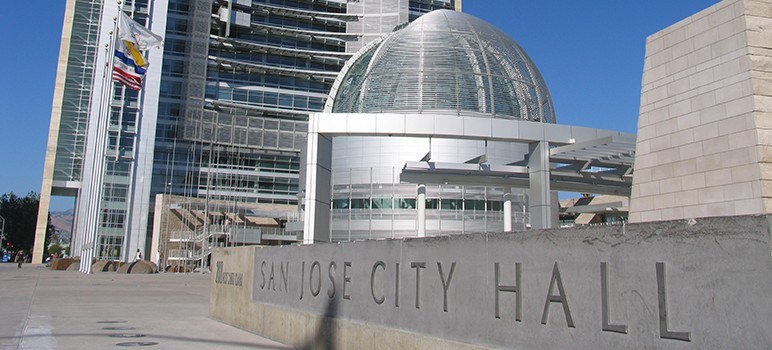Allowing cannabis businesses to expand in north San Jose, streamlining permits for in-law units, surveilling gun sales and buying back gas-powered leaf blowers.
Those are just some of the ideas up for consideration Tuesday as the San Jose City Council refines its list of policy priorities, a process that involves months of discussion and public comment that get distilled into a sort of to-do list for the year ahead.
Priority-setting ranks proposals by feasibility and importance. Those that could get off the ground relatively quickly were green-lit in past meetings.
Some of the latest proposals to make it to that round include Mayor Sam Liccardo’s plan to reduce gun violence by requiring gun sellers to videotape all firearm transactions and Councilwoman Pam Foley’s pitch for reducing fees and speeding up the timeline for approving accessory dwelling units, also known as “granny units.”
Councilwoman Magdalena Carrasco also suggested that the city develop an accessory-dwelling unit guide with construction templates for the public to use. City officials recommended giving her proposal the green light.
In addition to the granny-unit proposal, Foley submitted a number of other development-related ideas, including a comparative study of CEQA policies from city to city and reducing parking minimums around transit corridors. North Side Councilman Lan Diep submitted a nomination proposing that staff start rezoning parcels to bring them in line with the city’s general plan.
Liccardo also submitted a plan to streamline future development by create a universal fee for builders to avoid the “bureaucratic pinball” of inquiring for estimates from various city departments. “A universal development fee is not intended to reduce fees on development, but make fees easier to understand and estimate,” his office wrote in its pitch, which garnered support from the Silicon Valley Organization. “A unified fee could easily be revisited annually based on an objective, third-party feasibility analysis, rather than the piecemeal, irregular basis we undertake today. As a result of this analysis, fee ratios could be adjusted between categories to reflect the city’s current goals, and be responsive to current market conditions.”
The mayor also proposes incentivizing development of childcare facilities to address the current shortfall, which includes vast swaths of the city—like East Side—where daycares are few and far between. One way to encourage more childcare centers would be to offer urban village amenity credits for projects, or private recreation credits to reduce park fee obligations in exchange for childcare facilities.
Councilwoman Maya Esparza, a former nonprofit executive who worked on tackling homelessness, suggested a policy that would divert up to 100 families from the shelter system. “This pilot should leverage existing networks, such as the homelessness prevention system, and seek to create multiple access points with standardized assessment tools, reporting metrics, and a shared database,” she explained in a memo.
To read a more comprehensive list of suggested priorities, click here.
More from the San Jose City Council agenda for March 5, 2019:
- The San Jose Historical Society qualifies for grants to restore the Chiechi House and Peralta Adobe.
- March will be proclaimed Women’s History Month.
- Wednesday will be proclaimed World Lymphedema Day.
WHAT: City Council meets
WHEN: 1:30pm Tuesday
WHERE: City Hall, 200 E. Santa Clara St., San Jose
INFO: City Clerk, 408.535.1260


> One way to encourage more childcare centers would be to offer urban village amenity credits for projects, or private recreation credits to reduce park fee obligations in exchange for childcare facilities.
Wow! Talk about “micro-management”. This has to border on “nano-management”.
I have to believe that the Bolsheviks never even imagined this when they invented central planning.
San Jose will dissolve the city government and just let Google take over.
Yet another virtue signal.
https://sjoutsidethebubble.files.wordpress.com/2019/03/sanjosemental.png
If people in San Jose got together and saved up their urban village amenity credits and then donated them to the city, could the city use them to fix potholes?